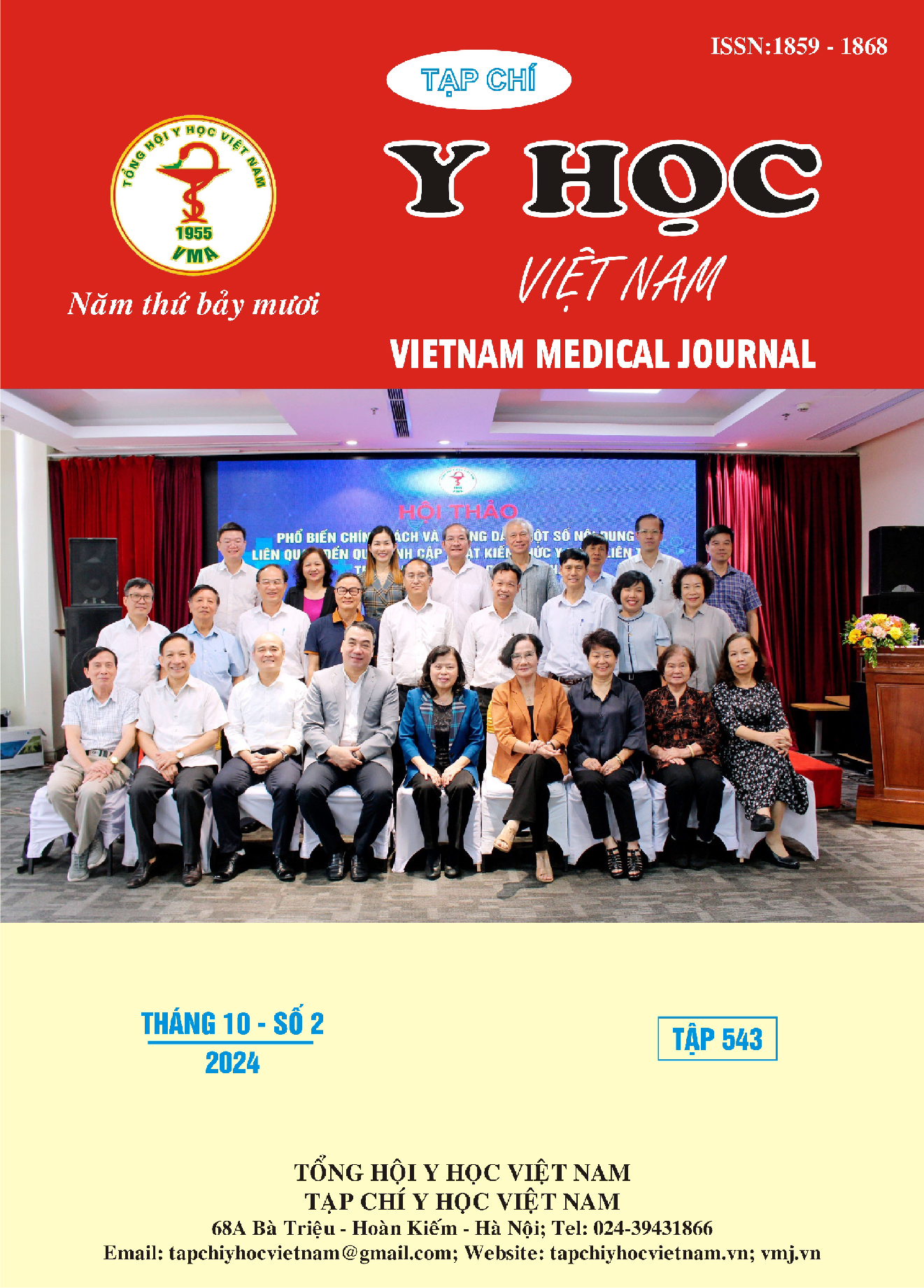CHRONIC SUBDURAL HEMATOMA: DIFFERENCES BETWEEN UNILATERAL AND BILATERAL
Main Article Content
Abstract
Objectives: Clarify the difference between unilateral and bilateral chronic subdural hematomas related to historical factors, epidemiology, clinical manifestations, and imaging diagnosis. Methods and results: We conducted research on all patients with chronic subdural hematoma operated on at Military Hospital 103 and Central Military Hospital 108 during January 2022- January 2024. Among 146 patients, 47 cases (32.2%) had bilateral hematoma. Symptoms of hemiplegia and cognitive disorders in the unilateral hematoma group were 71.7% and 13.1%, significantly higher than the bilateral hematoma group at 53.2% and 2.1% (p =0.039 and p=0.037). On CT scan: Hematoma thickness and midline pressure in the unilateral group were higher than in the bilateral group (p=0.001 and p=0.000). In the unilateral chronic DMC hematoma group, the lesions mainly had reduced density (41.4%), while in the bilateral chronic DMC hematoma group, the lesions were mainly mixed density. Conclusion: Clinically, there are no differences in characteristics of age, sex, or underlying pathology between the one- and two-hemisphere damage groups; However, the unilateral hematoma group often shows signs of hemiplegia and cognitive disorders. Lesion characteristics on computed tomography (thickness, midline displacement, density) were different between these two groups.
Article Details
Keywords
Chronic subdural hematoma, single-hole craniotomy.
References
2. Lê Xuân Dương, Nguyễn Khắc Hiếu. Nghiên Cứu đặc điểm lâm sàng, hình ảnh cắt lớp vi tính sọ não và kết quả điều trị phẫu thuật máu tụ dưới màng cứng mạn tính. Tạp chí Y dược lâm sàng 108 2022, 17(4):105-111.
3. Nguyễn Xuân Phương, Trần Mạch Cường. Đánh giá kết quả phẫu thuật máu tụ dưới màng cứng mạn tính bằng phương pháp khoan sọ một lỗ-bơm rửa dẫn lưu kín tại bệnh viện Quân y 103. Tạp chí Y học Việt Nam 2023 2023, 531(1B):51-54.
4. Kidangan GS, Thavara BD, Rajagopalawarrier B. Bedside percutaneous twist drill craniostomy of chronic subdural hematoma—A single-center study. Journal of Neurosciences in Rural Practice 2020, 11(01):084-088.
5. Jeong SI, Kim SO, Won YS, et al. Clinical analysis of risk factors for recurrence in patients with chronic subdural hematoma undergoing burr hole trephination. Korean Journal of Neurotrauma 2014, 10(1):15.
6. Ge R, Shen J. Gender-Specific Differences in Chronic Subdural Hematoma. J Craniofac Surg 2023, 34(2):e124-e128.
7. Hsieh CT, Su IC, Hsu SK, et al. Chronic subdural hematoma: Differences between unilateral and bilateral occurrence. J Clin Neurosci 2016, 34:252-258.
8. Park HS, Park ES, Park JB, et al. Chronic Subdural Hematomas: Comparison between Unilateral and Bilateral Involvement. Korean J Neurotrauma 2014, 10(2):55-59.
9. Mori K, Maeda M. Surgical treatment of chronic subdural hematoma in 500 consecutive cases: clinical characteristics, surgical outcome, complications, and recurrence rate. Neurol Med Chir (Tokyo) 2001, 41(8):371-381.


